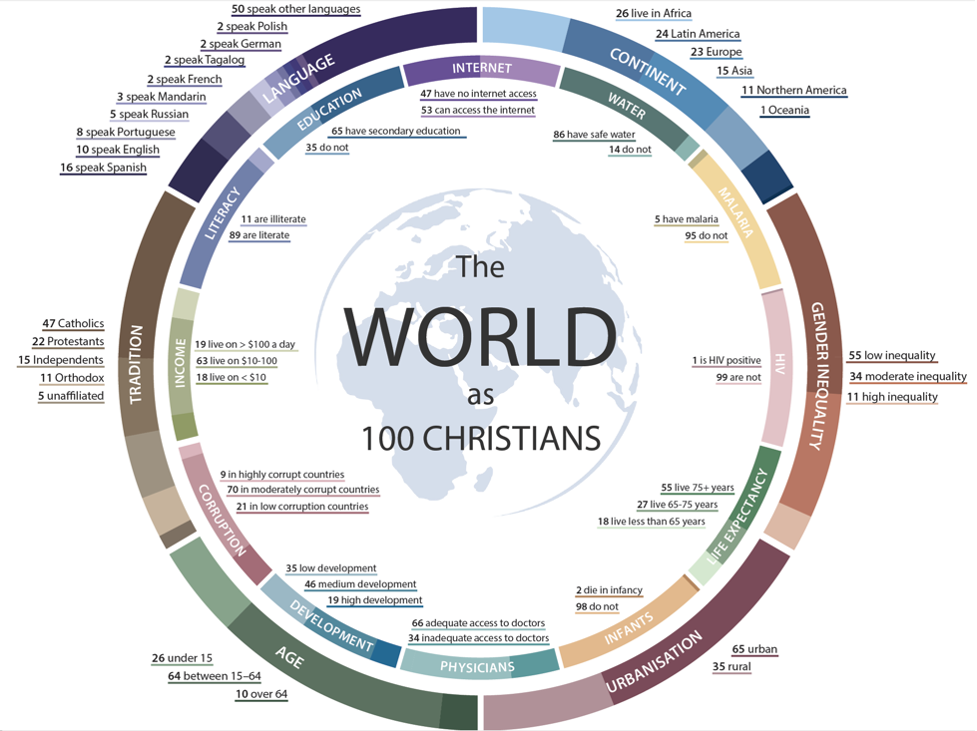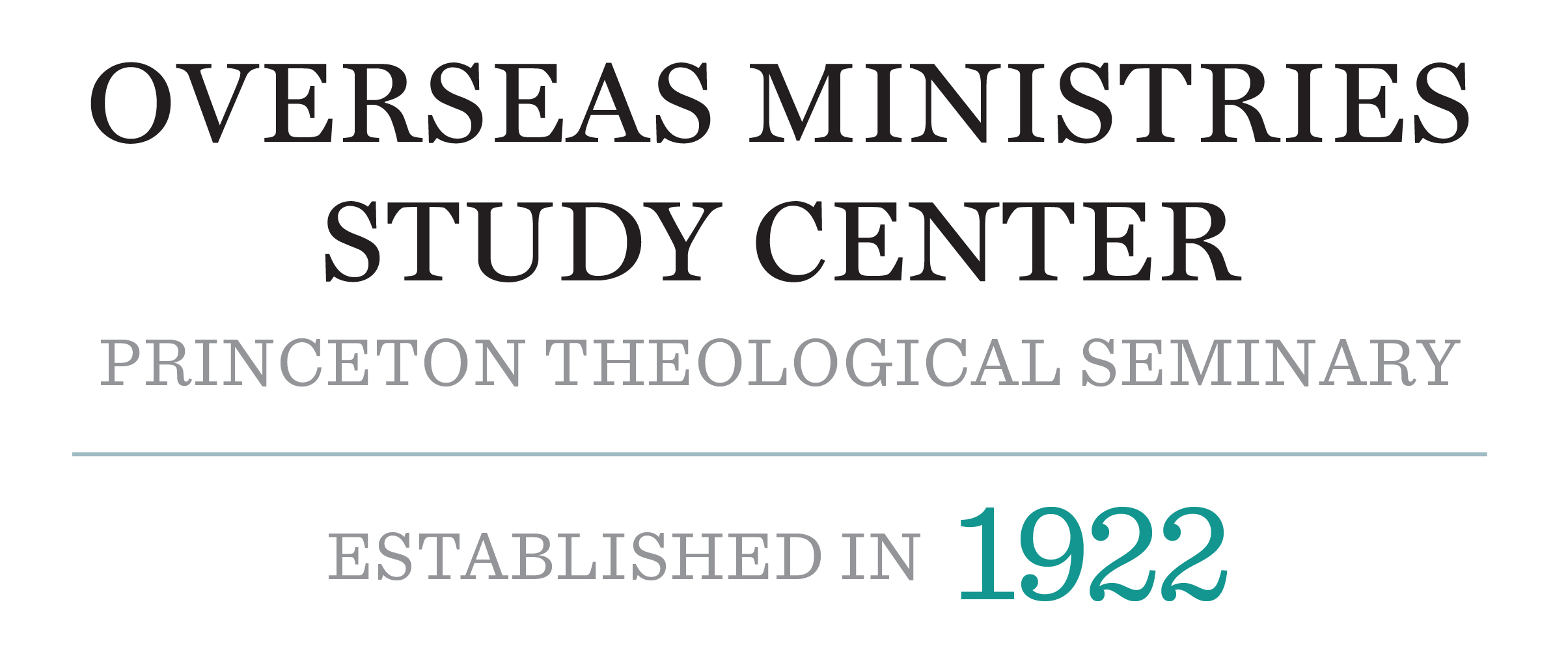by Gina A. Zurlo, Ph.D. – Co-Director – Center for the Study of Global Christianity
This post is part of The Occasional’s “Numbers and Trends” series, dedicated to sharing work, analysis, and perspectives from our friends and partners at the Center for the Study of Global Christianity based at Gordon-Conwell Theological Seminary.

There are 2.5 billion Christians in the world – that’s a big number. So big, it can be hard to conceptualize it. But 100 is different. You’ve probably been in a room with 100 people. You can probably list 100 people by name. What if those 100 people represented all the beauty and diversity of World Christianity? When the World as 100 People graphic went viral a few years ago, I knew this could be replicated with data on global Christianity. With the help of CSGC research assistant Amanda Perkins and designer Brad Coon, we developed the graphic above and published it on the first page of the World Christian Encyclopedia.
If 100 Christians represented all of global Christianity, 66 would live in Asia, Africa, Latin America or Oceania, while 33 would live in Europe or Northern America. Most would be found in urban areas (65) as opposed to rural (35). Linguistically, 16 would speak Spanish as their mother tongue, 10 English, 8 Portuguese, 5 Russian and 3 Mandarin Chinese. Most (64) would be between the ages of 15–64, while 26 would be under 15. Eleven Christians would be illiterate, and 35 would have little to no access to secondary education.
If 100 Christians represented all of global Christianity, roughly half would have access to the internet – the rest would likely never see this graph, nor probably any other quantitative data on Christianity. Fourteen would have no access to safe water, and five would have malaria. Most Christians (79) would live in countries with moderate to high corruption; 35 would live in countries with low development. A typical Christian today is a young, non-white woman living in the global South, with lower-than-average levels of societal safety and proper health care. This represents a vastly different typical Christian than that of 100 years ago, who was likely a white, affluent European (though probably also a woman, even if women weren’t publicly at the fore).
This graph is helpful for realizing the importance of the social, religious, linguistic, political, cultural, health, and other contexts that Christians live in all over the world. Christian organizations – missions, educational, healthcare – exert a tremendous amount of time, resources, and effort to spread the Christian message worldwide and provide basic human needs, but often the larger context and the intersectional dynamics get lost.
For instance, closures related to the COVID-19 pandemic in 2020–2022 made us all realize how deeply we live in the digital world, but only half of Christians worldwide have access to the internet. The disparities related to being off the grid were keenly felt during the pandemic, and their ramifications are going. Generally, women have less access to the internet than men, and before the pandemic already 1.5 million girls were out of school. In 2019–2020, the number of young women enrolled in education, employment, or training programs decreased in dozens of countries, especially in rural areas where remote learning was not an option due to connectivity issues or lack of devices. An estimated 11 million girls will never return to school after closures related to the pandemic. For every year a girl is out of school, her potential adult earnings decrease by 20%.[1]
These realities, driven by data, beg the question – does this have anything to do with Christianity and Christian work in the world? Any Christian with a holistic worldview will respond with a resounding, “Yes!” At the most basic level, data like this can give Christian awareness of the diversity of Christian life worldwide. But it can be taken a step further, to where good data help Christians make good decisions on the individual, communal, and institutional levels. Fifty years from now, Christianity as 100 people might look very different, as Christianity continues its shift to the global South, increases its linguistic diversity, and embeds itself into cultures much different from the global North.
[1] Azcona, Ginette and Min, Yongyi (2021). Progress on the Sustainable Development Goals: The Gender Snapshot 2021. United Nations Women and United Nations Department of Economic and Social Affairs.




